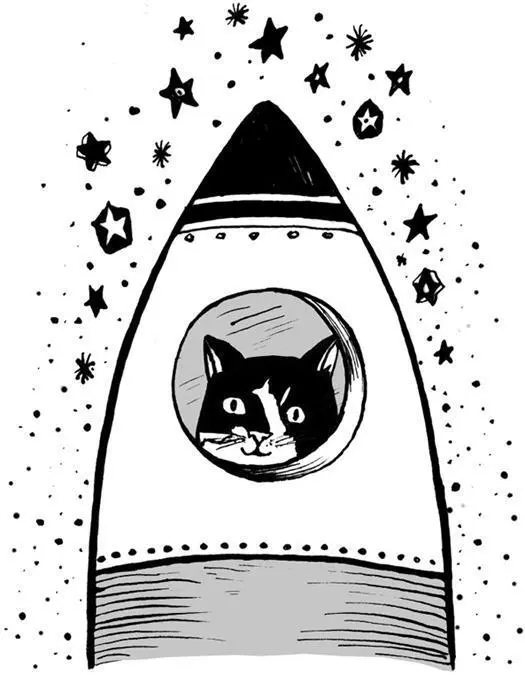On the appointed day, the entire crew filed by to gaze their last upon the luckless feline, who had shared all their travails without complaint. After everyone said their goodbyes, the ship’s steward served him his favorite meal—a bowl of sardines. And then, according to most accounts, Mrs. Chippy was dispatched, as humanely as possible, to that great scratching post in the sky. The Endurance crew abandoned ship shortly thereafter. They spent the next few months traversing the bitterly cold ocean in open boats and trudging across windswept tundra. But in the end, the entire (human) crew made it back to civilization alive.
Shackleton’s leadership made him a hero. But he was no hero to Mrs. Chippy’s owner, Henry McNeish. Apparently the ship’s carpenter bore a grudge against his commanding officer for the rest of his life. After the expedition, he settled in New Zealand, where he lived until his death in 1930. Any mention of the polar expedition would inevitably bring up a bitter complaint about how Shackleton killed his cat.
The old carpenter did receive some solace, and come company, in the afterlife. In 2004 an addition was made to his Wellington grave. The slab that marks his final resting place was adorned with a life-sized bronze sculpture of his beloved companion, Mrs. Chippy.
FELIX
THE FIRST CAT IN SPACE

At the dawn of the space race, numerous nonhuman species, from chimps to dogs, were bundled aboard experimental rockets and fired into orbit. But while many remember Laika the dog and Ham the chimp, few now recall the otherworldly exploits of Felix, the first feline in space.
The former Paris street cat (there’s some controversy as to whether it was a male or female) was scrupulously trained for his trip. On October 18, 1963, he was strapped into a Veronique AG1 sounding rocket at a French base in Algeria and blasted into the great beyond. Felix didn’t go into orbit, but he did fly more than 130 miles into space. Then the capsule reentered the atmosphere, deployed a parachute, and returned to terra firma. No one is sure what happened to Felix afterward, but one thing is certain: He fared better than the second cat in space, whose rocket broke up in flight on October 24 of the same year.
Felix’s journey is a bright spot in the history of catkind—tarnished only by the fact that the French put the first rat into space two years earlier.

THE CLIMBING KITTEN
THE CAT WHO CONQUERED THE MATTERHORN

Few mountains boast as fearsome a reputation as the Matterhorn. Straddling the Swiss/Italian border, its forbidding slopes defied mountaineers until the middle of the nineteenth century, when it was finally scaled. Yet even today, the 14,693-foot peak still claims several unwary climbers each year. Clearly, this challenge is not for the young and inexperienced.
Unless you happen to be a cat.
The first feline ascent of this famous Alpine peak was accomplished in August 1950 during an expedition led by Edmund Biner. While guiding his group up the Matterhorn, he paused at 12,556 feet to get his bearings. It was then that the adventurers realized they were being followed—by a kitten. A four-month-old kitten belonging to one Josephine Aufdenblatten of Geneva.
History doesn’t explain why the kitten elected to follow the men—only that it eventually pursued them all the way to the summit. Figuring the beleaguered creature had used up more than a couple of its nine lives, one of the climbers carried it back down to sea level in his rucksack.
SCARLETT
THE CAT WHO BECAME AN ACTION HERO

Overnight, a scrawny New York City feline went from anonymous stray to international hero. The transformation happened, literally, in a flash.
A flash of fire, that is. The saga began in March 1996, when a blaze consumed an East New York garage. As the battle against the conflagration wound down, firefighters noticed three four-week-old kittens huddled near the building’s front door, crying in fear. Across the street sat two more. A badly burned calico female paced nervously between the two groups.
It didn’t take long for firefighter David Giannelli to figure out what had happened. Giannelli, whose soft spot for pets earned him the nickname “the animal guy” in East New York’s Ladder Company 75, guessed that during the fire, the mother cat had dashed repeatedly into the blaze to rescue her kittens. Now she was in the process, in spite of her severe injuries, of moving them to a new hiding place.
The firefighter scooped up the mother and babies and took them to the North Shore Animal League in Port Washington, New York. The staff, sensing a chance for a little publicity, told the story to a local TV station. The agency got more than a little publicity. Everyone from CNN to the BBC picked up the tale, and soon people from as far away as Cairo and Japan were writing and phoning the shelter.
The mother was named Scarlett, because of the livid color of her burns. Sadly, one of the kittens died of an infection. But the other four made strong recoveries. As the family convalesced together, thousands of adoption offers flooded in from around the world. Finally, two kittens named Samsara and Tanuki were given to a Port Washington family; the other two, Cinders and Oreo, found their way to Hampton Bays, New York.
Heroic Scarlett found a home with the Wellen family in Brooklyn. Her scars healed, and the only remaining signs of her travails were her rather poor vision and the amputated tips of her ears. Her new owners have also helped heal any emotional scars. “She’s a total love machine,” a family member told the New York Times . The formerly scrawny stray is also, apparently, an eating machine. After her rescue she ballooned to seventeen pounds—quite a change from her days as an action heroine.
MOURKA
THE CAT WHO SERVED AT STALINGRAD

No single World War II battle proved as costly as the struggle for Stalingrad. For 199 days, German forces tried to wrest control of the Soviet city (now called Volgograd) from the Red Army. The Nazis were finally repelled, but at the almost unimaginable cost of two million lives.
The victory demanded incredible feats of heroism. Remarkably, one of the bravest of the brave wasn’t a soldier, but a cat named Mourka. During the bitter street fighting inside the city, exposing oneself for even a moment was tantamount to suicide. For one squad assigned to find and report the location of German artillery positions, the only way to get information back to headquarters was by hand—until they received unexpected help in the form of Mourka. The stray cat could run notes back and forth unobserved, sparing his human comrades terrible risk. His contribution to the war effort was duly noted in the Times (UK), which said of the intrepid feline: “He has shown himself worthy of Stalingrad, and whether for cat or man there can be no higher praise.”
Читать дальше














